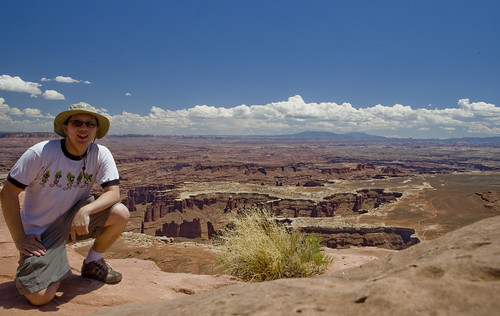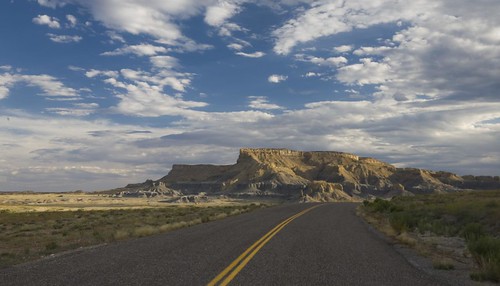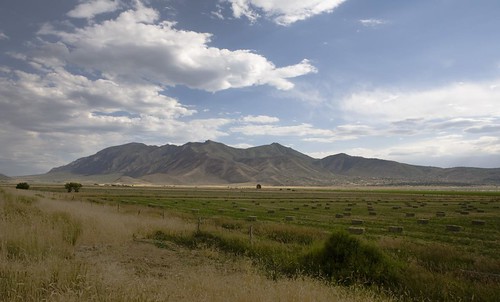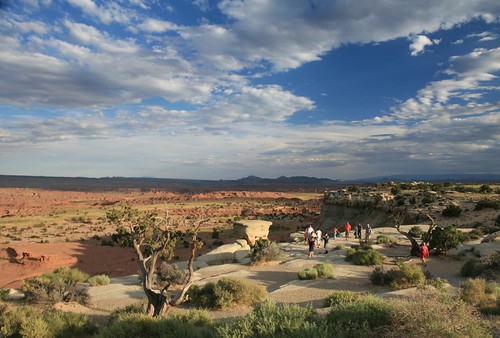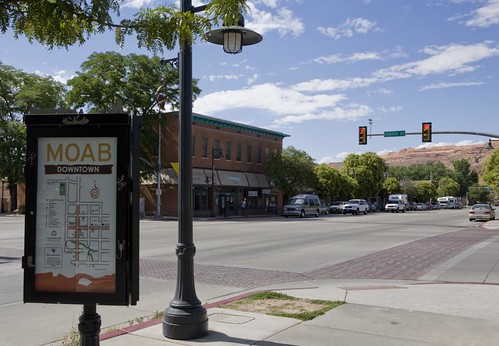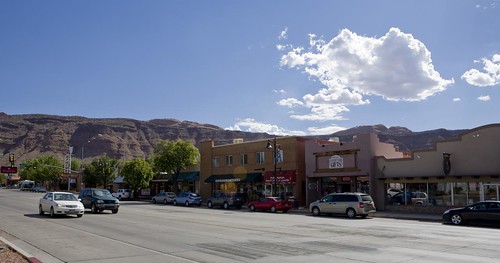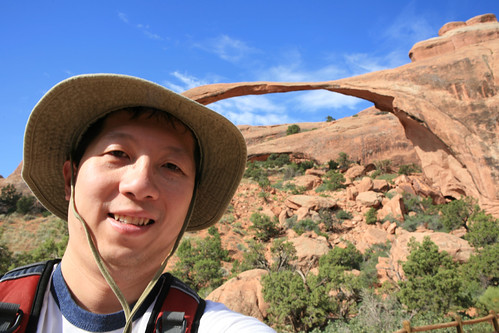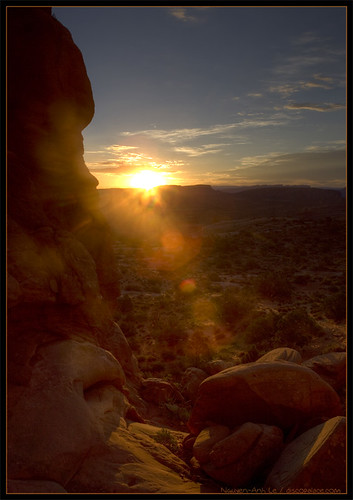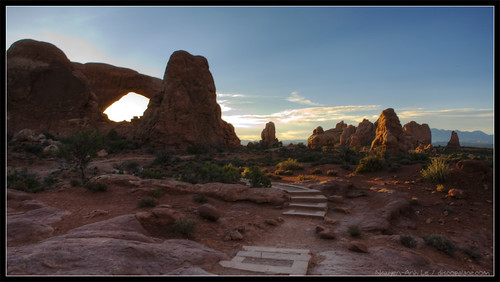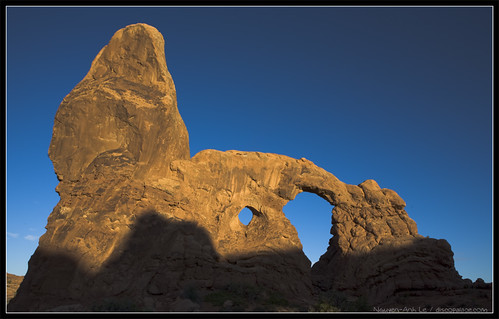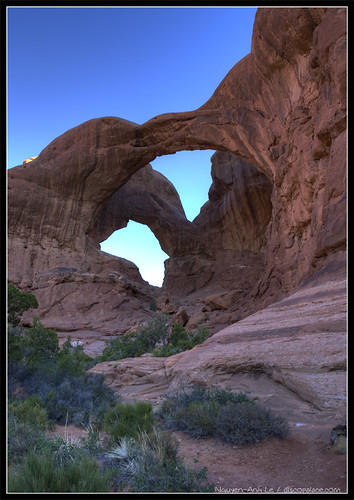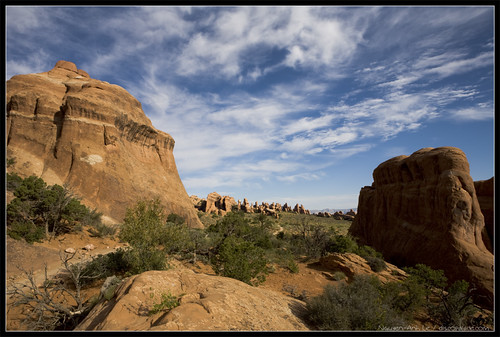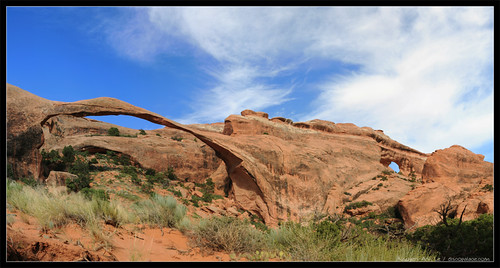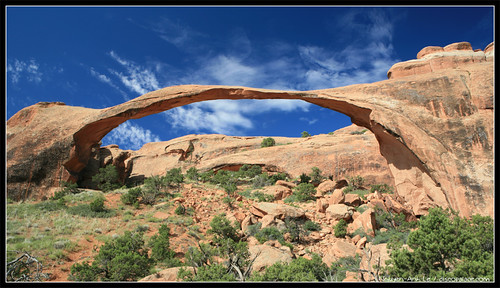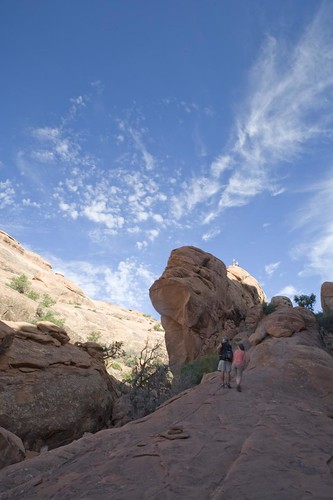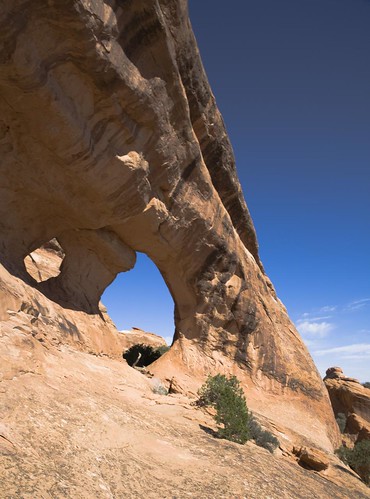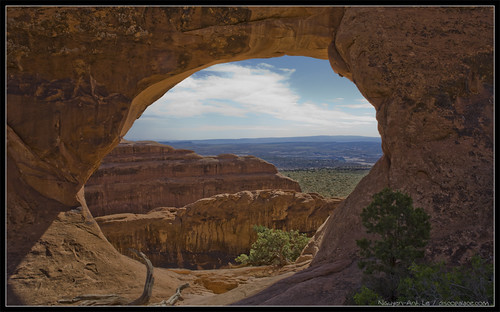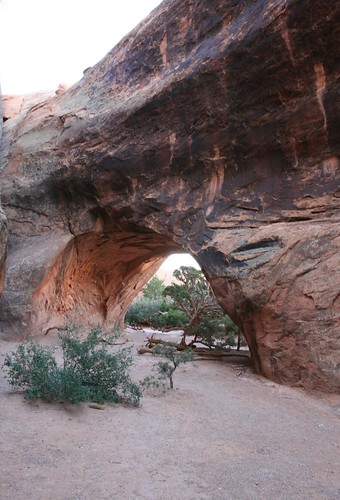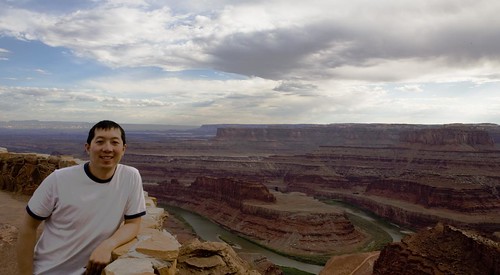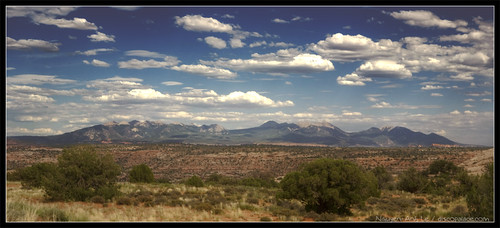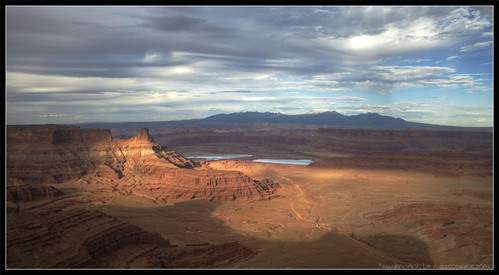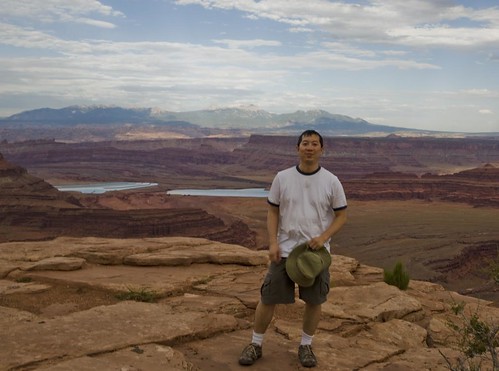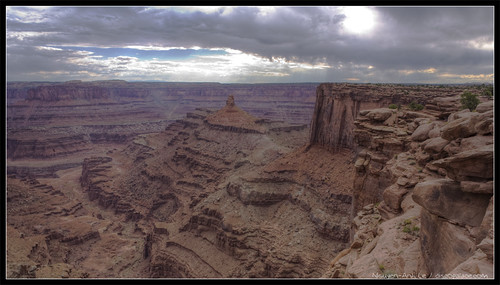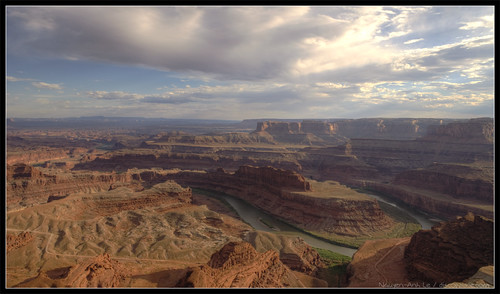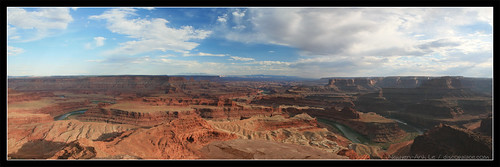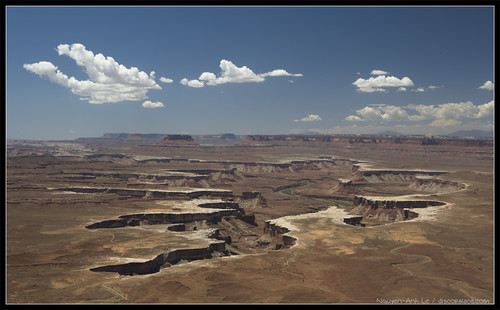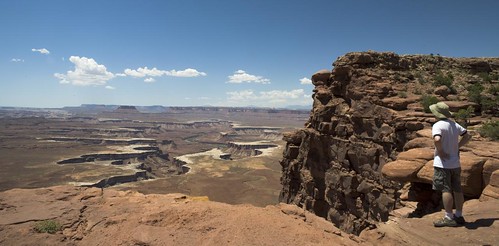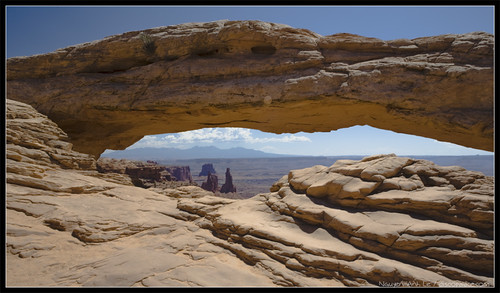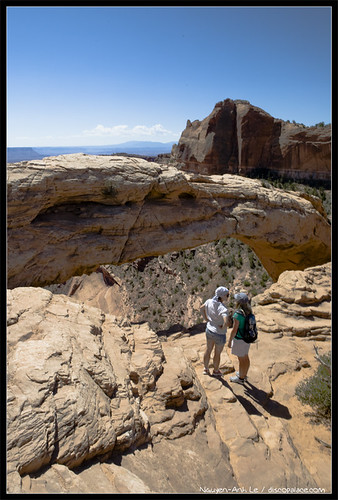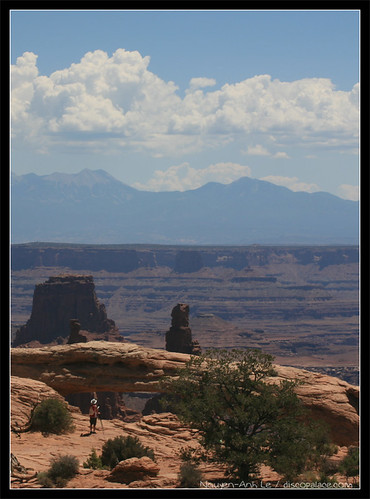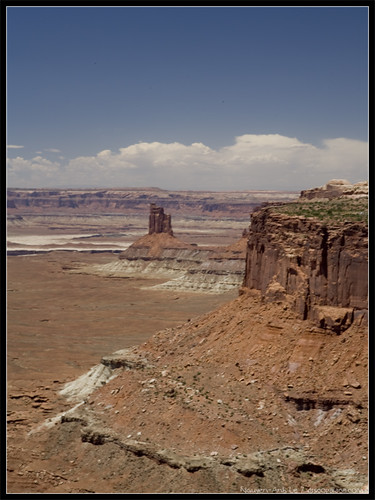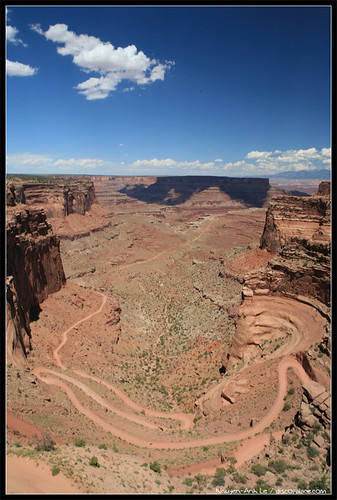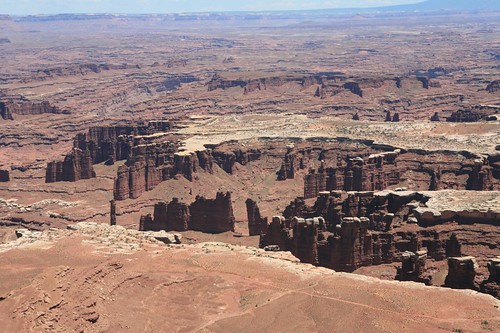Tuesday, July 20, 2010
Utah 2010 Trip Intro: Salt Lake City to Moab
A business trip brought me to Salt Lake City on a Friday in July. The meeting was set up with little notice; we only had a week to make plans. Luckily, I didn't have anything huge going on the following weekend, so I decided to make a mini-vacation out of it.
You know it's going to be a gorgeous weekend when you get to see the sunset above when your plane is landing. Aaaaaah.
Utah is an amazing place - there is so much beautiful scenery and nature nearby. It is loaded with national parks. You can't visit them all in a single weekend, so I had to choose. I had already been to Yellowstone & Grand Tetons (to the northeast - and these parks are actually in Wyoming, but close enough). I had not visited Zion & Bryce (to the south) or Arches & Canyonlands (to the southeast). Since Zion/Bryce are kind of close to Vegas, which I visit at least once a year, I figured it would be a good opportunity to check out Arches and Canyonlands.
Arches and Canyonlands National Parks are located in southeastern Utah, near the Colorado and Arizona borders. When my meeting was done, I headed down there in my rental car. The drive was about 300 miles one-way - about five hours (depending on traffic). I would have two full days (Sat & Sun) to go sightseeing. I began the return trip to Salt Lake City on Monday morning, flying home that evening.
The drive started out quite dull and full of Salt Lake City/Provo Friday evening traffic. It was very hot too! Temperatures reached around 100F or more every afternoon that weekend. But once I started traveling east on I-70/US-50, the drive became very scenic. There were all sorts of mountains, cliffs, rock formations, farms, poofy white clouds, and even scenic viewpoints to stop and check out.
Arches and Canyonlands National Parks are only about 30 miles apart. The land is part of the Colorado Plateau. This highland region that spans four states (CO, UT, AZ, NM) and features the mighty Colorado River running through it. Although Arches and Canyonlands are so close, their landscapes are very different. Arches National Park features all these crazy rock formations that stick out of the ground: arches, buttles, spires, etc. On the other hand, Canyonlands National Park features huge canyons dug into the earth by the Colorado and Green rivers.
Located just south of Arches National Park is a town called Moab. It's the perfect base of operations for travelers. I stayed at the Apache Motel there. It was nothing fancy, but all I needed were a bed, a shower, and some air conditioning :) Moab is a rather large tourist town. There are many hotels, restaurants, and stores. The downtown area is cute and clean, great for grabbing a bite to eat or buying a souvenir.
Moab is also pretty cool because it's right in the middle of all this beautiful scenery. You can see the mountains and rock formations in every direction.
After a long day of business, driving, and sightseeing along the way, I got to bed early to prepare for a couple days of communing with nature. My next article: a morning in Arches National Park.
Check out this article and others from my blog:
- This article
- All articles on Utah 2010 trip
- Blog home
Monday, July 19, 2010
A Morning in Arches National Park
Arches National Park is a beautiful place, with a unique geology that features crazy rock formations everywhere. You can see over 2000 monoliths, rock fins, spires, balanced rocks, and natural arches in the park. Here's a cool interactive map of the park, from the official park website.
I made two trips to the park: one on Saturday morning, and the other on Sunday evening. I took siestas at the hotel in the early afternoons - noon sunlight isn't that cool for photography, and it was pretty darn hot in the afternoons! Morning sunlight is quite different from afternoon sunlight. Also, certain landmarks at the park are better oriented for either the morning or evening sunlight. For example, the famous Delicate Arch is shot best at sunset (which I did!). This article covers my morning experience at the park.
Sunrise at the Windows
I have resolved to get up for sunrise photos on many trips in the past. However, this trip was the first time in which I followed through on the idea. I woke up at 5am, got my gear ready, and arrived at the park by about 6am, just before the sun rose. There are several areas of the park. I went to the Windows area to catch these sunrise photos.
The following shots were taken at the South Window:
Facing the Windows is Turret Arch. Turret Arch is really neat in the morning because the sun shines right on the face of the arch.
Just a short hike away from the Windows is Double Arch. It's pretty neat because the two arches share a common foundation pillar. Double Arch was in some scenes of the movie Indiana Jones and the Last Crusade.
Devil's Garden Area
The Devil's Garden Area is located at the end of the 18-mile scenic drive through Arches National Park. Devil's Garden contains several trails that lead to a bunch of arches. The first part of the main trail is about a mile long and is an easy hike. The scenery on the trail is great, especially with all the large rocks protruding from the ground.
The easy part of the trail ends at Landscape Arch. Landscape Arch is the longest arch in the park and one of the longest natural rock arches in the world. The photo at the beginning of this article is also of Landscape Arch.
Beyond Landscape Arch, the Devil's Garden Primitive Loop begins. The loop itself is about 7 miles long, plus a few side trip hikes to see specific arches. It's a difficult hike. You have to hike up and down sandstone slabs, and sometimes along high rock ledges. The views are amazing though. Just make sure you bring plenty of water!
Partition Arch is one of the side trips off the Primitive Loop. You can see the arch from afar on the main trail (you can barely see it in the photo above). But the side trip takes you behind the arch, and you can walk under it. You can get a nice view of the Devil's Garden area from under the arch.
Navajo Arch is another landmark you can see on a side trip from the Primitive Loop. While the hike around its back side is rather dull, the front side is kind of neat because it looks like you're hiking in a cave or ravine.
In Conclusion
Arches National Park is a beautiful, unique place. It's totally worth it to get there early to enjoy the sunrise and the morning light. After an early start and over ten miles of hiking, I was hungry for a nice lunch and then a siesta. I ended my morning adventure at this point and headed back to Moab. Articles to come: Canyonlands National Park, Dead Horse Point State Park, and Evening in Arches....
Check out this article and others from my blog:
- This article
- Part 2 of my Arches experience
- All articles on Utah 2010 trip
- Slideshow of Utah 2010 trip photos on Flickr
- Blog home
Sunday, July 18, 2010
Dead Horse Point State Park
It was late Saturday afternoon in Moab. I had just woken up from a peaceful air-conditioned siesta in the hotel, while the sun was bearing down outside with 105F temperatures. Hopefully it had cooled down a tiny bit. Time to head out again and do an evening hike.
The original plan was to go back to Arches National Park. But as I went outside to the car, I noticed that the sky had gotten rather cloudy, just in a few hours. All that heat and humidity builds up weather systems so quickly! I figured that all the clouds would prevent good evening sunlight from shining on the arches. So it was time to head elsewhere. I decided to go west to Dead Horse Point.
Before arriving in Moab, I had never heard of Dead Horse Point State Park. And even if I had heard of the park, why would I go all the way to Utah to visit a state park?? There are all sorts of national parks around, duh! But I spoke to my buddy Rob, who had been here a week ago, and he recommended going there. Taking a look at some pics online, going there surely made sense. It looked spectacular! I guess when you're in the Great West, even a state park can blow away anything you see in the flat, corn-filled midwest.
Dead Horse Point State Park is about a 30 mile drive from Moab. It's right next to Canyonlands National Park. I actually don't understand why they didn't make it part of Canyonlands. The scenery/geology is pretty much the same.
The drive to Dead Horse / Canyonlands is very scenic. There are viewpoints for you to pull off and take photos or have a picnic. There are some great views of the La Sal Mountains to the east (first two photos below), as well as nearby rock formations like Merrimac and Monitor Buttes (third photo below).
Here's a more detailed map of the park, from the official park website. The park is pretty small and simple. There's only one road in the park. The road overlooks canyons on both sides. It ends at Dead Horse Point. Sounds like there are some great hikes, especially if you want to go down into the canyons. But if you are lazy like me and just want to snap photos, there are several great overlooks.
Looking to the east, you can see Pyramid Canyon and the Shafer Basin. The La Sal Mountains are in the distant background. Here are some shots, the first two from the Basin Overlook, and then the Pyramid Overlook.
The true gem of the park, as the name suggests, is Dead Horse Point. Dead Horse Point sticks out into the canyon. You get a beautiful panoramic view of the area, which includes the Colorado River curving in a "gooseneck" shape.
Finally, I leave you with a panorama photo of Dead Horse Point. Click on it to view it in full screen mode.
Check out this article and others from my blog:
- This article
- All articles on Utah 2010 trip
- Slideshow of Utah 2010 trip photos on Flickr
- Blog home
Saturday, July 17, 2010
Canyonlands National Park, Utah
Aside from Arches, Canyonlands National Park was the other major attraction to see on my Moab trip. Canyonlands is a very different land than Arches. In Arches, you look up or climb up to see most of the landmarks. The rock formations sticking up from the ground are is due to periods of geological turmoil and uplift, plus erosion. In Canyonlands, you look down to see the landmarks. The Colorado and Green rivers sculpted the land lower and lower into a deep and wide canyon, from years of gravity's exertion and erosion. Canyonlands as actually rather similar to the Grand Canyon.
Canyonlands is located just over 30 miles from Moab, right next to Dead Horse Point State Park. Here's a detailed, interactive map of Canyonlands, from the official park website. You can click on the map to enlarge. As you can see, Canyonlands is a fairly big park. The park is actually divided in three areas: Island in the Sky, the Maze, and the Needles. Separating the areas are the canyons carved by the Colorado and Green Rivers, which flow in a y-shaped path through the park. In fact, the canyons are so big that you can't cross between the areas; you need to leave the park and go around in order to get to a different area. Most people, like me, only visit the Island in the Sky area. If you have extra time, you can visit the Needles. The Maze is very remote, with few marked trails, and it requires something like a 4x4 plus a hiking permit. Canyonlands's multiple areas is similar to the Grand Canyon's - the North Rim and South Rim are entirely separate.
Green River Overlook
The Green River is one of the two rivers that is responsible for carving the terrain of Canyonlands National Park. It's actually a tributary of the Colorado River. One neat thing about Canyonlands is that you can see the rivers in the canyons pretty easily. In the Grand Canyon, you need to hike pretty far in order to see the Colorado River. Seeing the rivers up close makes it easier to understand how their forces could have sculpted these deep canyons over millions of years.
Mesa Arch
Canyonlands has its own famous Arch, Mesa Arch. There are only a few arches in Canyonlands, as opposed to the dozens of arches in Arches. Mesa Arch is pretty cool though, and there is a great view behind it.
There were plenty of visitors at the parks. Not nearly as many as Yellowstone, but enough. Especially neat was that many of the visitors were either French or German. Bonjour! Guten tag! It's fun to include other visitors in your travel photos :)
Viewpoints Galore
There are lots of places for hiking and viewing in the Island in the Sky area. Here are a few. The first photo is of Candlestick Tower. The second is of the cool dirt road you can take down the Shafer Canyon.
Grand View Point
The south end of the Island in the Sky area is Grand View Point. It's as close to the center of Canyonlands as you can get. As the name suggests, there is quite a grand view of the park here. Below you are more river gorges and canyons. In the distance, you can see the Needles and the Maze areas of the park.
Here's a closeup of the canyon. All those needle-like pillars are neat. You can see a lot more of them in the Needles area of the park.
Here's a panoramic view. Click on it (or on any photo) to view in full screen.
Sunset at Upheaval Dome
Upheaval Dome is located in the northwest corner of the park. It is an interesting geological landmark because there was some kind of event that flipped the layers of rock. You can see the white "salt dome" sticking out of the ground in the lower-right of the photo below. The salt layer is supposed to be covered by many other layers of rock. Scientists think it was either some crazy movement of the salt bed, or it an asteroid hit it. Or maybe aliens came here? :)
Most of my photos of Canyonlands were taken on Sunday, during the day. However, these pics from Upheaval Dome were taken on Saturday evening, after my visit to Dead Horse Point. To be honest, I didn't pick the best spots for a sunset. But oh well, you will have to look at my sunset pics anyways :)
Next article topic: Arches National Park, part 2
Check out this article and others from my blog:
- This article
- All articles on Utah 2010 trip
- Slideshow of Utah 2010 trip photos on Flickr
- Blog home
Subscribe to:
Posts (Atom)
